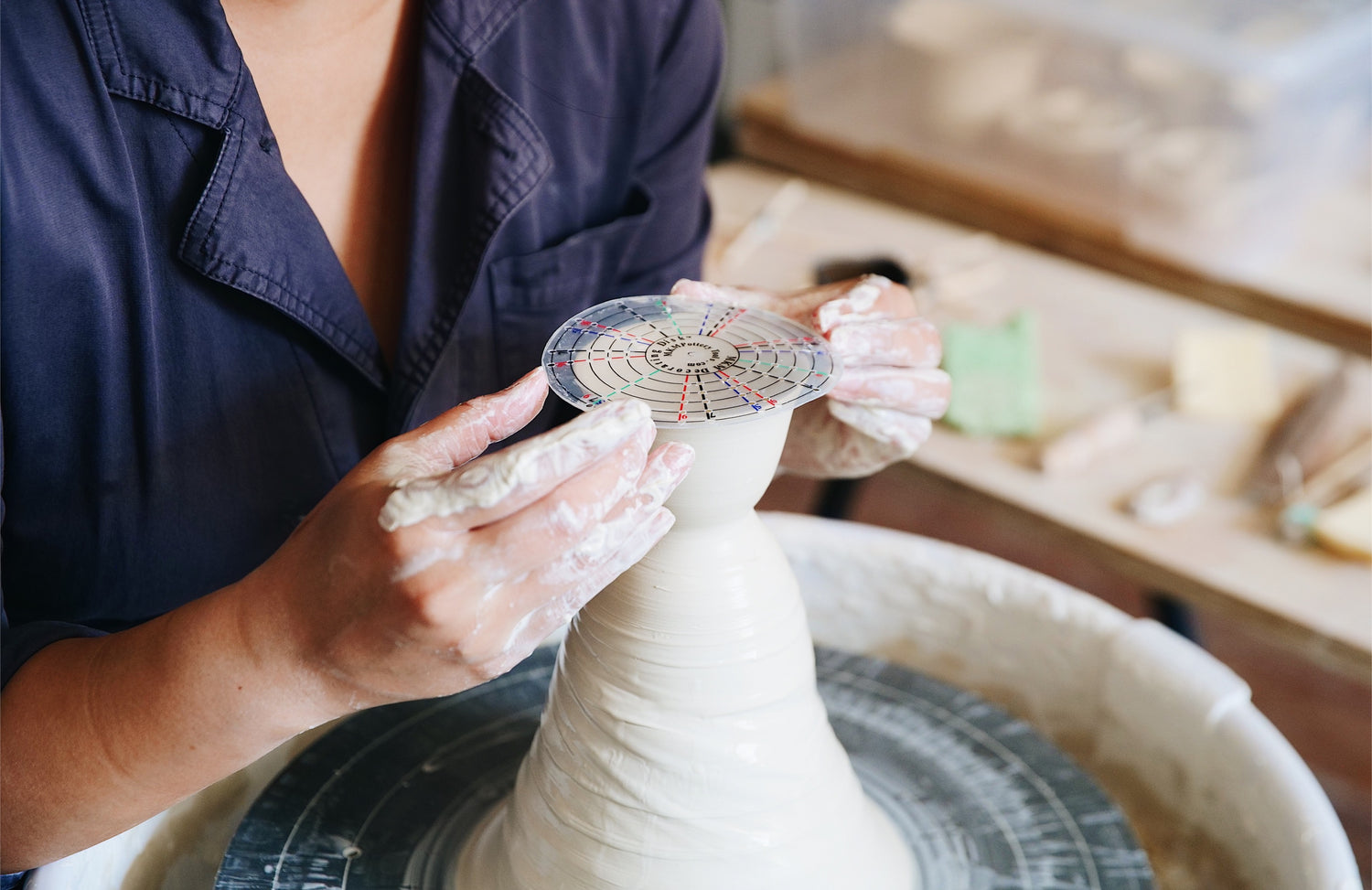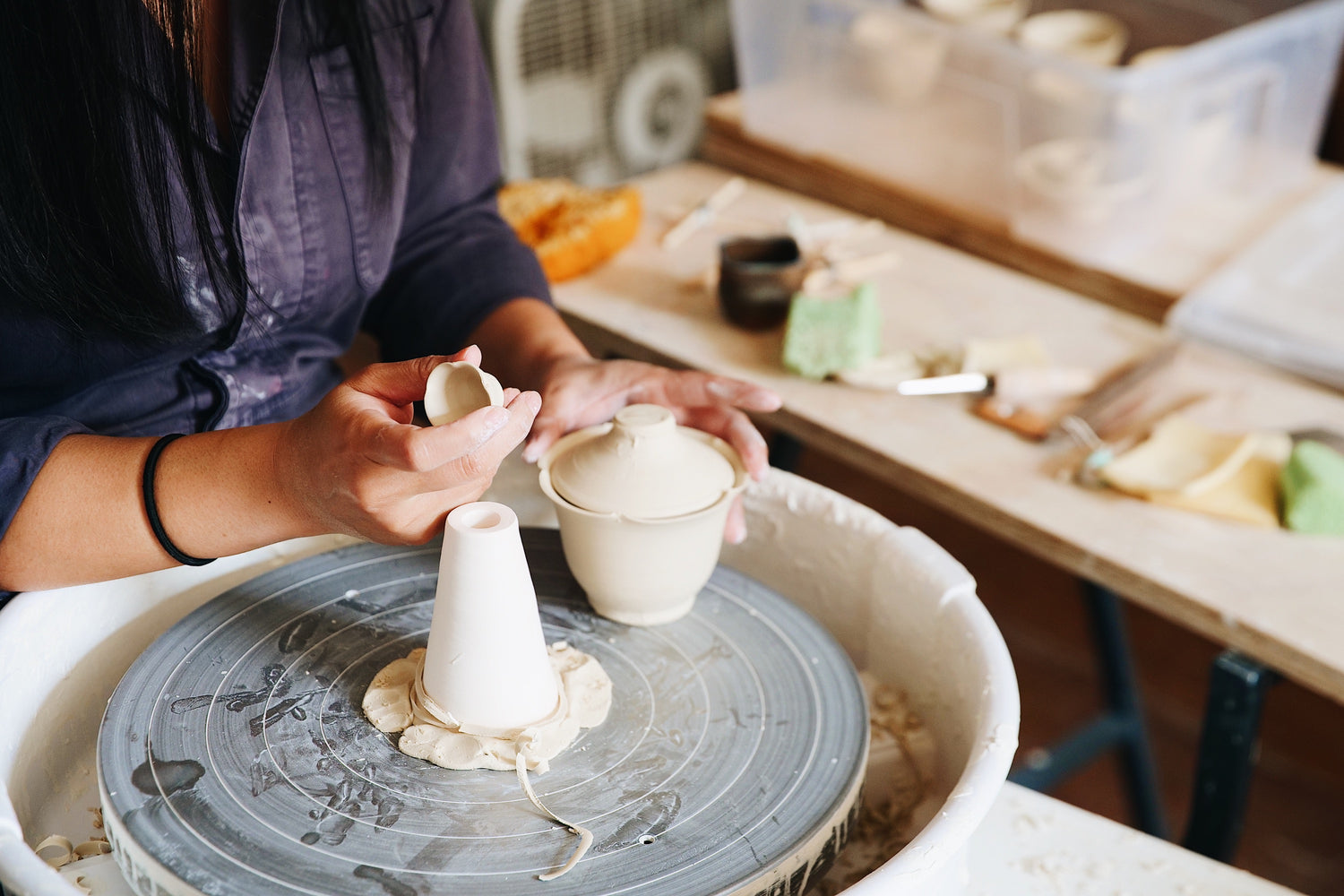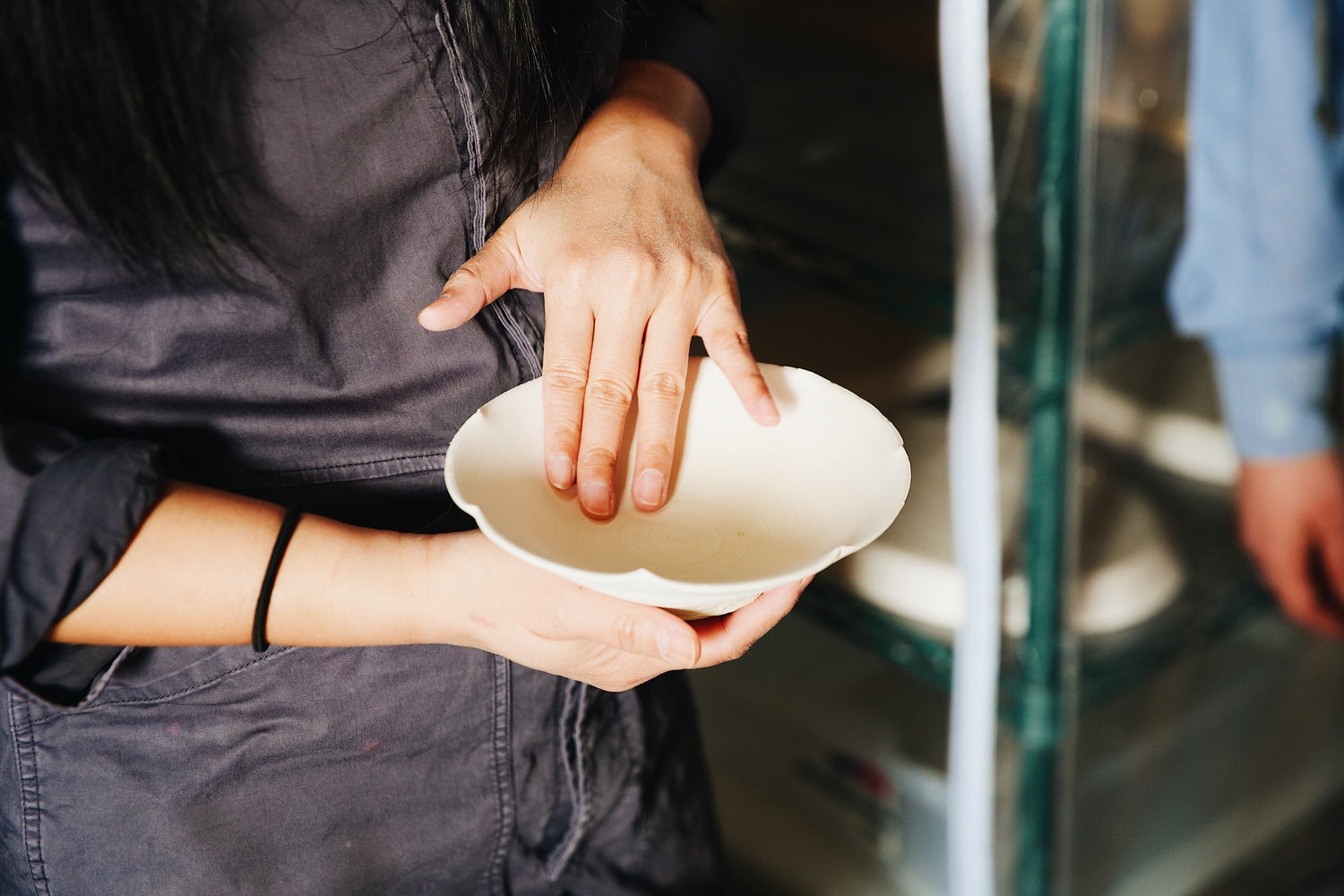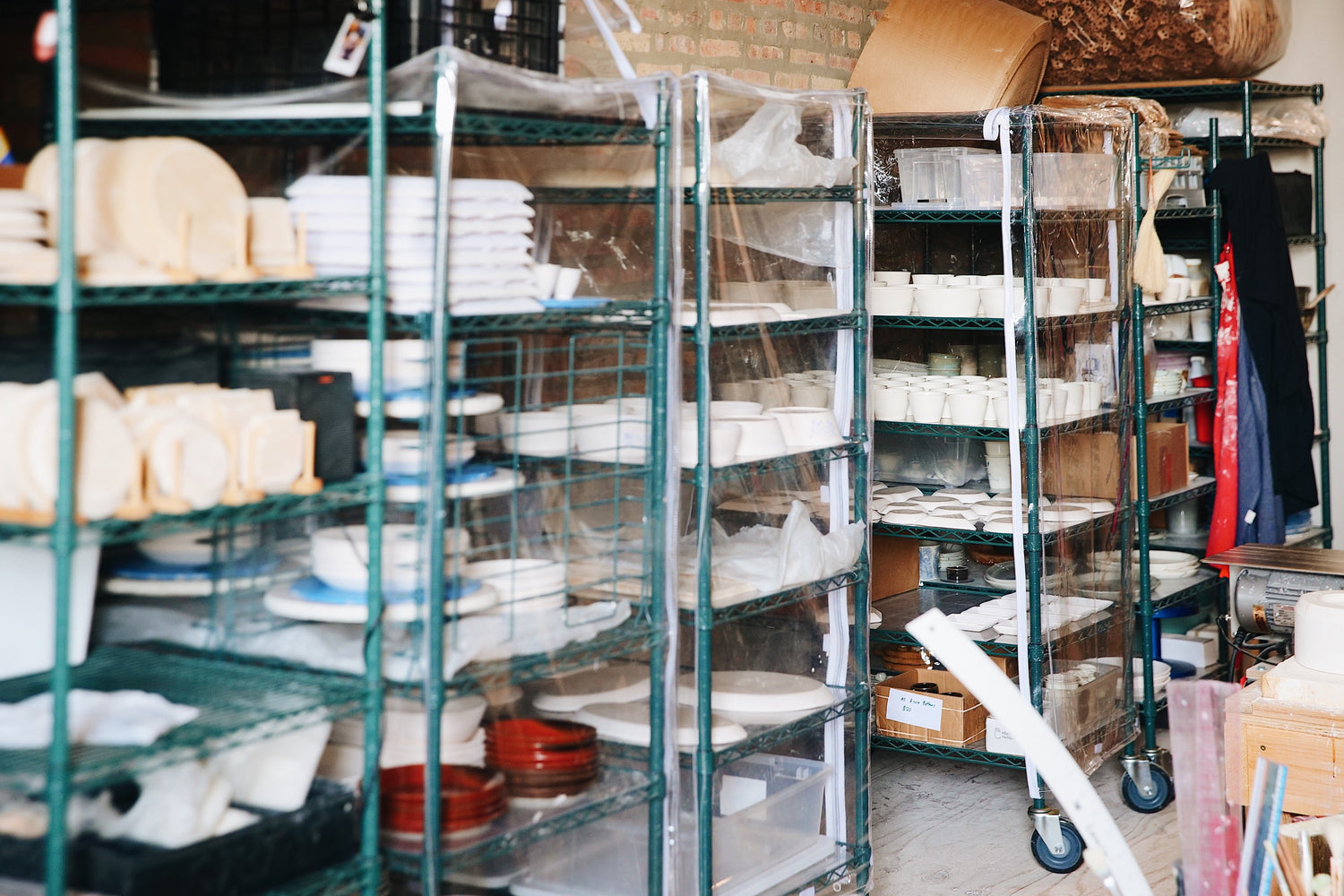We're excited to announce our next Martha Mae product collaboration, made in partnership with Monsoon Pottery. The Petal Collection pays homage to the deep influence that Asian ceramics play in Danielle Chutinthranond's work and Jean Cate's grandmother's collection of petal cups. Translating the theme of petals into a larger collection, Danielle has taken her passion and knowledge of the Chinese practice of gong fu tea, and handcrafted an exclusive line of porcelain teaware.
We visited Danielle's pottery studio to give you a behind the scenes look at the making of this collection. Launching on May 4th, the Petal Collection will include: tasting cups, tea cups, gaiwan with hu cheng (tea tray) sets, small snack plates, and medium snack plates.
Those of you based in Chicago will have the opportunity to explore the collection in person and experience a Spring Gong Fu Tea Tasting event with Danielle in the Martha Mae Studio.
Please enjoy the process video of Danielle throwing and trimming a petal cup below.
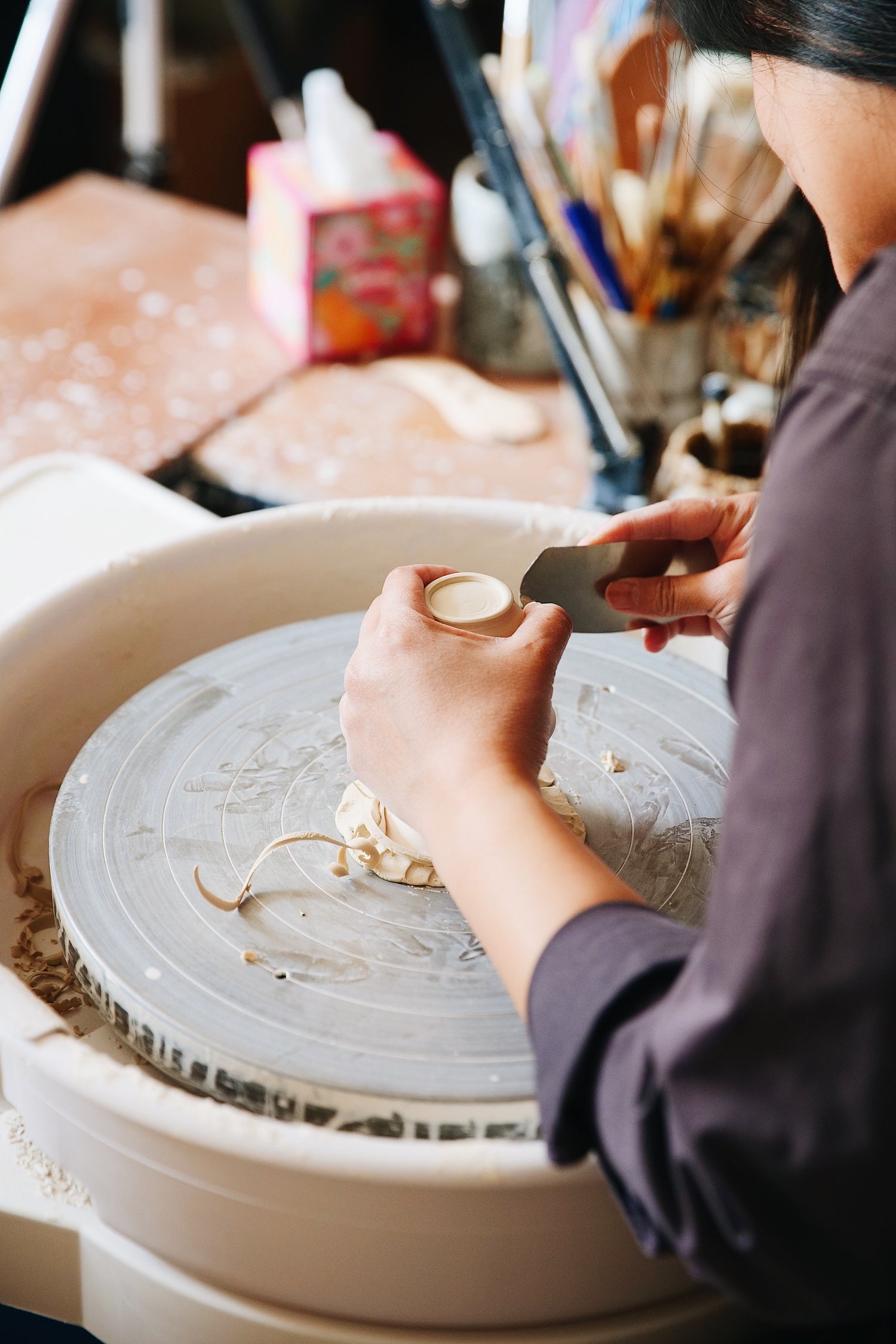
Danielle, what inspires you about this collaboration?
Jean and I had been talking about a collaboration for quite some time. We’re both very drawn to the simplicity of porcelain finished in a clear glaze. As a porcelain artist, I consider that combination the ultimate expression of the material as well as a challenge–there’s no flashy glazes or surface decorations to hide behind.
I created petal cups for a solo show last year and, when Jean came to the opening, I learned that her grandmother used to collect petal themed ceramics. With those few petal tea cups in mind, we expanded the idea into an entire collection centered around the Chinese practice of gong fu tea: brewing tea in multiple short steeps to taste the full range of what the leaves have to offer.
My practice is heavily influenced by traditional Asian ceramics and I love how decorative flower motifs appear throughout Chinese art history. Floral motifs started showing up in China in the first and second centuries and became common decorations by the Tang Dynasty (618-907 CE). Their popularity persists to this day.
Depictions of flowers were most obvious in historic Chinese ceramics as images painted onto the surface of pots. A lotus flower on a plate could symbolize concepts ranging from quintessential Buddhist ideals to a wish for marriage and fertility. Expressions of flower motifs in ceramics are the most enticing and inspiring to me when they can be seen in three dimensions; a depiction solely in form. At the Art Institute of Chicago, you can see examples of foliate rimmed dishes from the 10th century and inverted petal-lobe rimmed dishes from the Song dynasty, both clearly symbolizing flowers without drawing a single image.
I’m fascinated by how these ideas and forms still capture our interest and desire a thousand years later.
What goes into making the petal design?
I throw every piece of the petal collection myself on the potter’s wheel. Creating the petals is a game of finesse. The rims need to be thin enough to form fine petals but not so thin that they become too fragile. Each rim needs to be flared just-so in order for the piece to look like a flower in bloom rather than one that’s closing at dusk. The petals are created by using a sharp metal tool to push the rim back towards the center of the cup at intervals that represent individual petals.
I find it interesting that hand making these historically inspired pieces requires me to use techniques that are just as old and unchanged.
How did you decide on the number of petals?
You’ll see a mix of petal numbers in the collection. I’ve chosen to use 4, 5, 6, 8, and 9. As someone who has a Chinese partner of 10 years, I can tell you that Chinese numerology, superstition, and homonyms can be a minefield. Without writing a book on each number, I will discuss the number four as an example of the research and cultural knowledge that informs my intention in making vessels for a practice that does not belong to me (I’m Thai).
The word for four in the Chinese language is a homonym for the word “death” and is therefore considered an unlucky number on its face. If you subscribe to this superstition, you would not want to see the number four in your address, as the last number in your license plate–even some buildings in China skip their fourth floor. However, in Chinese Art, four is not seen as an unlucky number at all. In fact, groupings of four are extremely popular and reflect the elemental balance inspired by the four seasons of the year. Popular motifs include the Four Gentlemen, the Four Happinesses, the Four Arts of the Scholar, and more. To me, choosing a group of four petals evokes the four ordinal directions or the seasons, rather than being a harbinger for death.
If you’re curious about the rest of the numbers, I encourage you to come to the petal collection launch so we can discuss!
What products are included in the full line of the Petal Collection?
Each object in the Petal Collection is designed to support a gong fu tea practice. However, everything (except maybe the gaiwan) can have its own use in your daily life outside of a tea practice. I’m obviously extreme in the intentionality I bring to making culturally significant work, both because I find it essential to being respectful and because I believe that maximizing specificity enhances the quality of my work. In practice, I don’t believe that the story of an object is complete when it leaves my studio, it simply continues when you use it in your home and doesn’t need to be limited by my intentions.
The collection is made up of the following pieces:
Tasting Cup (4 or 5 petals)
Tea Cup (5 petals)
Gaiwan set with hu cheng (5 petals for cup, 9 petals for hu cheng)
Small snack plate (6 petals)
Medium snack plate (8 petals)
The gaiwan is a Chinese tea brewing vessel and is a cup with a lid. In our gaiwan set for the Martha Mae collection, the third piece will be a hu cheng, which acts as a small tea tray for the gaiwan. We suggest rounding out your tea set with either one large tea cup or 2-4 tasting cups (3 cups would make a traditional Chaozhou set). In conjunction with tea, we encourage snacking. There are two snack plates: a small one that may hold 1-4 candied kumquats and a larger one that may hold a fresh mochi dessert or moon cake.
What inspired your love and knowledge of tea and teaware?
A couple of years ago, during the lockdown portion of the pandemic, my partner Jack gifted me a beautiful Taiwanese gaiwan set for my birthday. I found it bold of him to give me ceramics but later realized it was the perfect gift. I became obsessed with brewing tea gong fu style as it provided a grounded daily ritual for me in a very uncertain time. As someone who already loved wine, I found that tea wasn’t that different. Teas are designated by their cultivars (analogous to grapes in wine); affected in taste by the terroir in which they’re grown; and cultivated by farmers and tea makers who are driven by their own unique perspectives. A simple gift of an unfamiliar vessel allowed me to develop a new daily practice and travel the world one cup at a time.
As I became more comfortable rejoining everyday life, I found a community that was just as passionate about tasting and brewing tea gong fu style. I have learned so much about tea and continue to learn from the members of the Chicago Tea Collective. What started off as monthly tasting events, or CommuniTEAs, has transformed into a collective of tea enthusiasts and professionals supporting tea businesses and events across the city of Chicago. I’d encourage anyone who is curious or enthusiastic about tea to come to the next CommuniTEA event.
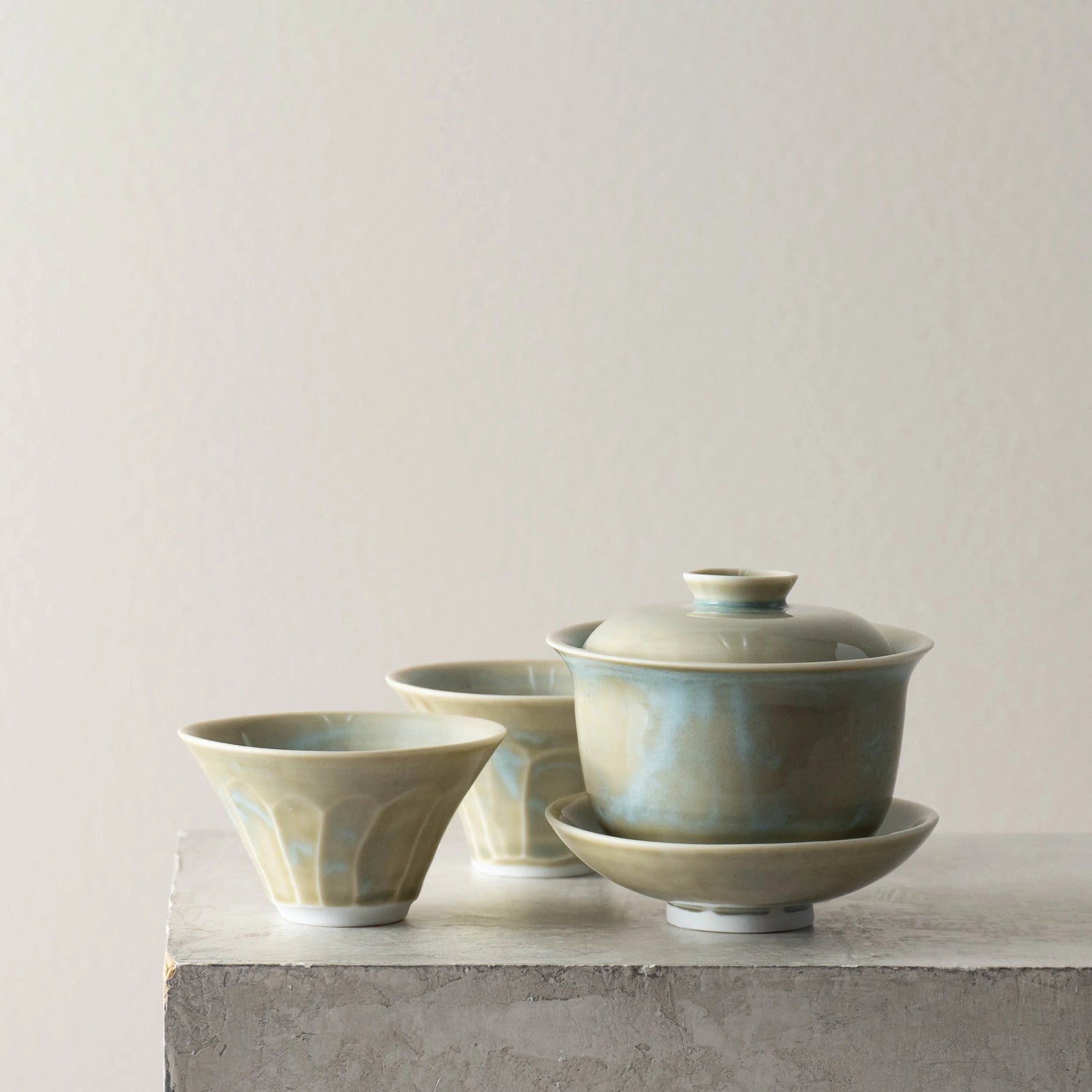
A brief history of gong fu cha
Gong fu cha, which translates to "making tea with skill" or "the art of tea", is a traditional Chinese method of preparing and enjoying tea that dates back to the Ming Dynasty. Originating in the Chaozhou region of China, gong fu cha embodies a holistic approach to tea appreciation, emphasizing meticulous preparation, precise brewing techniques, and a deep connection with nature. This region was the origin of Phoenix oolongs, and the drinkers there developed special techniques to brew this type of tea.
Historically, gong fu cha evolved as a way for tea enthusiasts to fully experience the flavors, aromas, and textures of high-quality teas, often through multiple infusions of the same tea leaves in small tea bowls or gaiwans.
The gaiwan, a versatile and elegant Chinese teaware, is one of the oldest tools for steeping tea. Its design consists of a lidded bowl with a wide opening and a saucer, often made from porcelain, although other materials like glass or clay are also used. The gaiwan's simple yet effective design allows for easy infusion and precise pouring.
The practice of gong fu cha involves several key elements, including the selection of loose leaf teas, the use of specialized teaware such as gaiwans, cups, and hu cheng trays, and a series of precise brewing steps. These steps typically include rinsing the tea leaves, controlling water temperature, and employing short steeping times repeatedly to extract the full spectrum of flavors from the leaves.
Gong fu cha is not merely about drinking tea; it's a ritualistic experience that fosters mindfulness, appreciation of craftsmanship, and a sense of tranquility. Today, gong fu cha has spread beyond China and gained popularity worldwide, with tea enthusiasts embracing its principles to elevate their tea-drinking experience.
*Photo by Monsoon Pottery
We hope you enjoyed this behind-the-scenes look!
If you would like to join us for the Spring Gong Fu Tea Tasting, tickets can be purchased here. We will also be hosting a Meet the Maker afternoon with Danielle of Monsoon Pottery and Sugoi Sweets that is open to the public on May 4th from 11am-3pm at The Center of Order and Experimentation.


